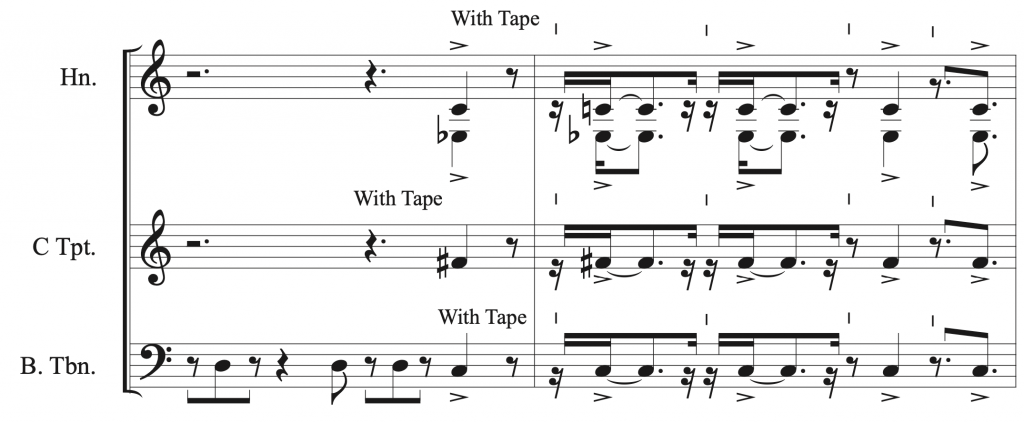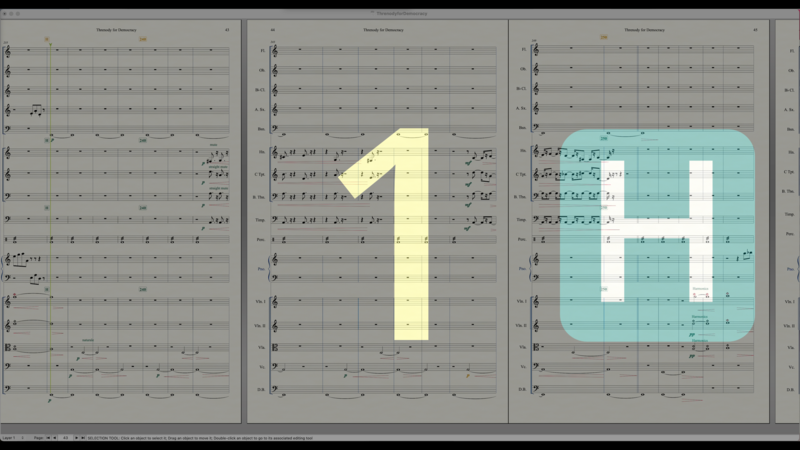Final Preparations
The past few weeks have been filled with intense preparation for the November 2 premiere of my digital “tape” and orchestra piece. Collaboration is key at this stage, I started out by sending draft parts to performers to ensure playability and clarity of modern techniques. The feedback from musicians has been invaluable, particularly for the piano part, which needed revisions to better accommodate realistic performance demands, not all pianists are Franz Liszt. It’s essential to ensure that everything can be performed smoothly, and I’m fortunate to have such skilled musicians to help refine the piece.
Precision and Rhythmic Adjustments
With limited rehearsals before the performance, it’s essential that the score and parts are clearly notated to ensure smooth rehearsals. I’ve been meticulously reviewing the score, ensuring rhythms align with the conductor’s beat pattern, and all dynamics, rehearsal markers, and cues are in place. For better readability, I re-notated some sections using stemlets (extended beaming over rests).

Additionally, I’ve prepared program and performance notes to guide both the musicians and the audience, ensuring a cohesive interpretation throughout the performance.
Fine-Tuning Parts
Although notation software automatically generates parts, you frequently need to adjust them for readability and ease of performance. A lot of effort goes into laying out everything clearly on the page and ensuring smooth page turns, which was particularly challenging for the piano part. In this case, the pianist will likely need a page-turner. However, with more musicians using digital displays and foot pedals to turn pages, this issue is becoming less critical than it once was.
Digital “Tape” Synchronization
In addition to the score revisions, I created a video with the digital “tape” part for the conductor. This video counts out the beats, displays measure numbers, and includes rehearsal markers to help synchronize the orchestra with the digital “tape”. After sending a draft to the conductor, I’m awaiting further feedback to ensure everything runs smoothly during rehearsals.

Example of Video
Printing and Logistics
Yesterday, I had the score printed—90 pages at 11”x17”—and it cost around $60. Soon, I’ll be mailing it to the conductor. Thankfully, individual parts can be delivered electronically, saving time and costs. Managing the orchestra has been challenging, with last-minute changes in musicians and composers, requiring hours of reviewing scores, phone calls, and emails. Despite the time-consuming logistics, replacements have been found, and things are finally falling into place.
Looking Ahead
The digital “tape” still needs mastering, but I feel I still have time to address final tweaks leading up to the first rehearsal. I will need to start testing the equipment for the “tape” playback, including my PA and Mackie HR 824 reference monitors. I’m eager to see how everything comes together in performance.
This composition has been a long journey, and I’m excited to finally see it take shape. After much deliberation, I’ve settled on a title: Threnody for Democracy: What You Can Do. With only weeks to go until the premiere, it’s thrilling to watch this work move closer to its debut.
Discover more from Michael Cooke | Blog
Subscribe to get the latest posts sent to your email.
Tags: democracy, in progress
